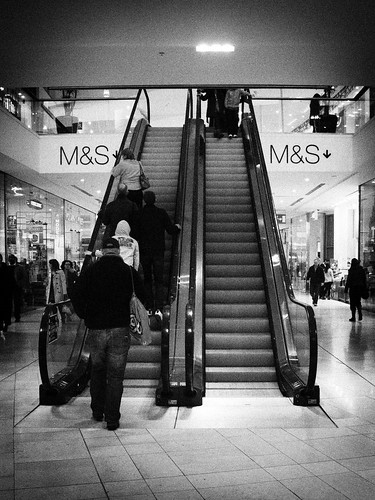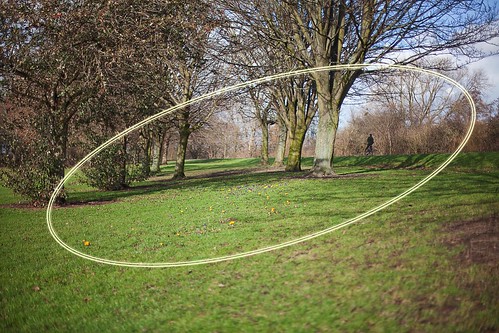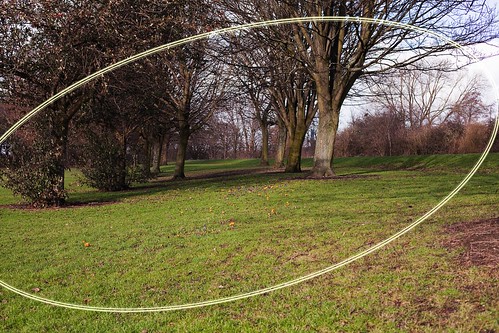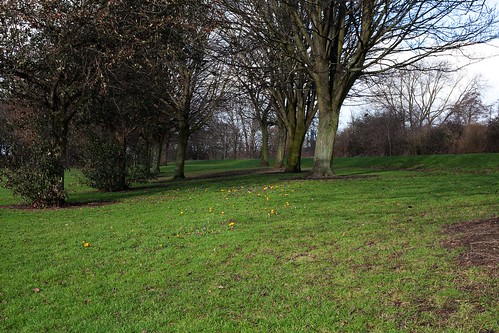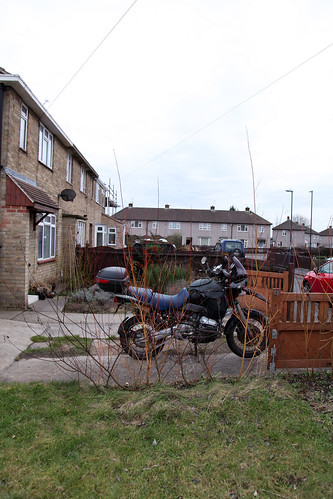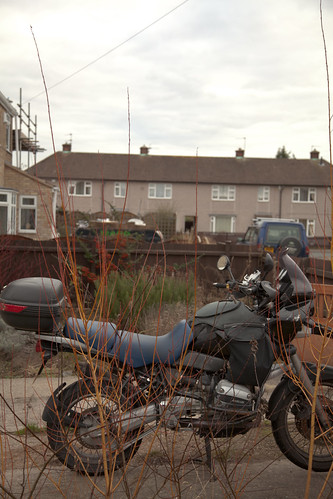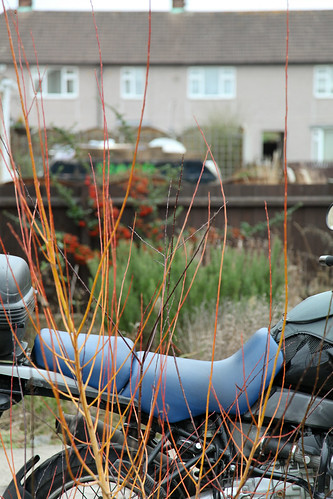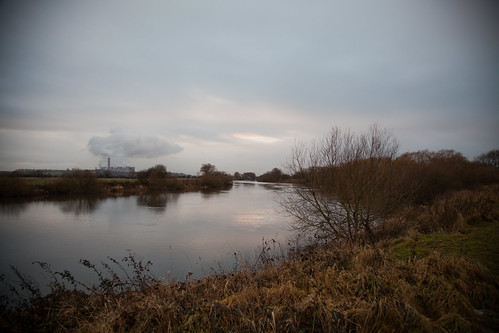Tuesday 13 December 2011
Tuesday 18 October 2011
Michael Wolf welcomes World Press Photo controversy - British Journal of Photography
Michael Wolf uses cropping to isolate specific images and by removing some reference areas it creates a new narrative. An innocent image of someone crossing a street by cropping in close with other people. Taking this image as an example, close cropping gives a feeling of entrapment and claustrophobia as the "cast" appear to move closer together;it becomes a CCTV image of a mugging about to occur.
It's as much about choosing the decisive moment to press the shutter as it is about placing the main components into the image to relay the new storyline the characters have to follow. As such I consider this to be photography of the street and of equal value as any street photography.
Wednesday 27 July 2011
Rip it up and start again....
Hopefully I will now have sufficient time to get this course back on track. Or should I rip it all up and start again?
I will spend the next few days assessing the work already done and get the notes taken over several months into one place. Then make a decision to carry on or go back to the start.
It's proving hard to get back into the "study" groove and even harder to stop over criticising my own work... I should leave that to the tutors for now!
Friday 11 March 2011
Derby vs Westfield
Wednesday 9 March 2011
Bruce Gilden goes "head on" in Derby
This is a link to a trailer for great video by Olivier Laurent currently being shown at the Derby Museum and Art Gallery as part of the Format 11 international photography festival. This years is dedicated to Street Photography.
Bruce Gilden was filmed on the streets of Derby getting some of the shots being exhibited alongside the documentary and it gives an insight into his methods and motivations. It clearly shows how the mantra of the street photographer " get in close" can be achieved with sympathy and compassion for the subject. His skill is as much about his observation of his subjects as his ability to communicate with them.
This confirms that excellent Street Photography is created by more than merely acting as an observer, but also by getting an empathy with the subject. Until you can understand , how can you explain.
Saturday 12 February 2011
Project:Focus - Different Apertures
The aim of this exercise is to determine the effect of different apertures on the same scene.
I have tried several images for this exercise, but so far due to the flat overcast February light it has been hard to get the modelling required to clear define the areas of focus. These so far are the best set with a good clearly delinated areas of focus.
I tried to keep the same exposure, by using aperture priority, for each shot but once again was cursed by the changeable weather and light levels. Even using a tripod I wasn't quick enough as the clouds kept drifting across the sun... again and again...
I used the 50mm lens for this due to it's very wide range of f/stops from 1.4 to 22.
Image 1 clearly shows the small area of focus (marked within the yellow lines) with the fall off towards the lens clear in the lack of sharpness in the grass at the foot of the picture.
Image 2 shows how by moving to the middle of the available f/stop range that the area of focus has increased. Focus is improved towards the edges and corners but it is still clear that there are still areas where sharpness starts to degrade and makes it difficult to define separate blades of grass on the lower limit of the image.
Image 3. was taken using the limit of the range, in this case f/22. It can be clearly seen that even towards the edge of the image all details can be clearly seen and separate blades of grass are evident on the bottom edge of the image.
Thursday 10 February 2011
Project:Focus - Set Aperture
Given the nature of the recent weather, the non-stop grey cloud giving a flat featureless light which has plagued me over the past month, I decided to move indoors for this project.
I set up a white panel to try and bounce available light back into the shot and soften the shadows I also set up the flash to one side to provide a small amount of fill.
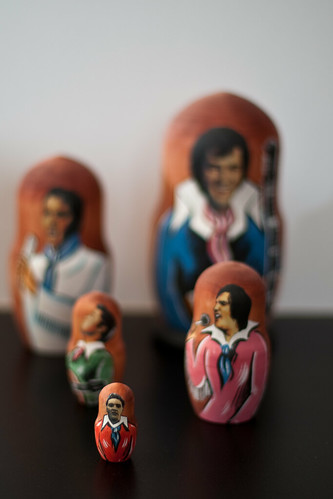 |
| Image 1 : 50mm f/1.4 1/40 ISO 100 |
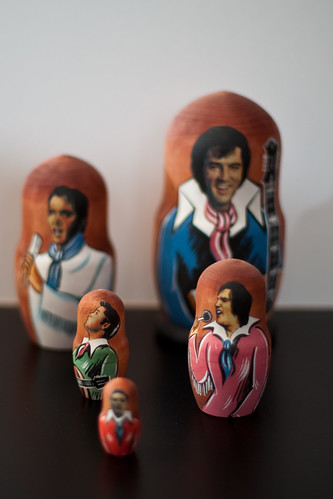 |
| Image 2 : 50mm f/1.4 1/50 ISO 100 |
Image 2: I moved the point of focus to the middle sized dolls and this helped to isolate them amongst the others. However I found this less pleasing given the subject matter than the Image 1. I do feel though that if you need to isolate a person or an item within a central position in a frame this would be a good option.
 |
| Image 3 : 50mm f/1.4 1/50 ISO 100 |
Using a narrow Depth of Filed to isolate the main item in an image works well with static subjects. Using this technique to isolate foreground subjects and blurring the background works best. I would consider the best use would be to use this in portraiture, particularly to isolate the subject from a distracting background.
Sunday 23 January 2011
Camera: Focal Length and Angle of View
Wednesday 19 January 2011
The Art of Photography - Project1 - RTFM!
On Monday I started Project1 in earnest. Sitting in quiet contemplation with my camera and manual I carefully read and experimented, and read again. I carried on again last night and will carry the manual with me for the next few days until I feel I can remember, or be able to quickly refer to, all the sections I will need.
As this is a new camera and one I have only owned a few weeks it was a good way of "bonding" with it. However it also made me consider how well I know all my other kit.
I work in IT and Read The Fine(substitute your own F word here) Manual is a standard riposte when an piece of kit or an application throws up an error code or needs to be reconfigured to perform a specific task. It's a simple methodology; if it comes with a manual, read it, as at some point you will need it!
Also to use a tool fully you do need to establish what it can and can't do. So I have now pulled out the manuals for every piece of kit I am likely to be using on this course and will , after re-reading them all, place them in a easily reached location until I have committed them either to memory or can easily find any section when required.
Tuesday 18 January 2011
Take 3; Why do I want to do the OCA degree.... ?
Prior to a holiday in 2004 a point and shoot Fuji digital camera was obtained. I liked what I could do, the immediacy of the small format. The clarity of the images in good light and the Fuji vibrancy made something start to smoulder.
I took the film kit out less and less the small silver box in my pocket becoming the main tool, then half way up an Alp in a thunderstorm it died. I tried desperately to find a replacement but I also knew that the limited controls available on a point and shoot would be a stumbling block... I wanted to be able to have greater control and to create images again.
The Canon 400D was obtained in 2008 and with it a new found passion for photography... but I still felt that having a small portable point and shoot made for an handy sketchbook" and invested in a large mega pixel Fuji.. but this time I was very disappointed. To keep up with the consumers the image stabilisation and face recognition software made for great snapshots but lousy landscape and fur and hair capture. Noise was a big issue and the lack of control after using a Canon D-SLR led me to a Canon G9 as a bridge camera. all the fun of a fixed zoom lens "point and shoot" with aperture , speed and even flash control.
Once I had decided to take the OCA courses I decided I had to get my hands on a larger sensor so the 5D Mk II was obtained and the course signed up...
So why do I want to do this degree...?
First off I want to make myself believe I am capable of what everyone else tells me; I have to quantify it by a result.
Secondly I want to find my true "voice". There are times I feel like a three year old. I have a good photographic "vocabulary", I understand the meaning of things but when I try to string a pictorial sentence together I am often frustrated as my meaning is not always clear. Perhaps I am trying to say the wrong thing... or not saying enough..?
Time will tell.
Enough of this blather, on with the course.
Saturday 15 January 2011
Take 2; Why do I want to do the OCA degree.... ?
People became used to me with it as almost a third eye, and I was getting invited to lots of social occasions as I would always have a camera. This was of course in the pre-digital age when you had to be aware of how not to waste film as it was relatively expensive to get colour prints done.
I had also by this point started to assemble my own darkroom bits and pieces and was starting to brew my own negs.It's amazing what you can achieve with a water-bath for the dev tank and and a changing bag. I started to shoot more Ektachrome to develop at home and every two months splashed out on process paid Fujichrome or Kodachrome depending on the time of year. I had also achieved prizes in local photography competitions run by the museums and libraries... a short lived phase, mainly due to having to mix with disgruntled members of the local photographic clubs and societies ,at the prize givings, who actively made it obvious they didn't like non-members winning anything.
By the late 80's I was starting to experiment with things that would come to be called Lomography. I still have the Lubitel 166 I bought in '87 alongside the Leningrad light meter that still reads the same as my brand new Canon 5D. Add to that a series of charity shop "disposable" Polaroid cameras... never did find an SX70 going cheap.. and an experimental phase began.
Meanwhile, technology was moving ahead and suddenly nobody had a cartridge camera any more every one had 35mm Point and Shoots... then came the Auto Focus SLR's with built in fast motor drives and a host of other features. The AV1 and the lenses were traded in for an EOS 600 and a couple of what proved to be wonderfully neutral Sigma zoom lens. At this point there were less people wanting the inevitable party shots so I was free to play with my other great toy, Ilford XP2. With the rise in the number of 1 hour labs, it was almost like a proofing service. Being able to shoot Mono in the morning and after lunch see if you needed to go back and shoot again... the colour masking issues that some complained about with it, I loved.
I then made my first attempt at trying to pull all of my knowledge and techniques into a direction. In 1992 I took an A Level in Photography and passed with a B... everything went down hill rapidly. After completing the course I really lost focus. What had felt like a natural gift for composing an image started to look and feel stilted as I tried to rigidly adhere to the correct rules, I had lost my freedom of expression. Like many A level courses in all subjects it taught by rote for a huge part of the theory. You didn't find out by personal experimentation you followed the exercises as laid out for you. A destructive way of teaching a creative subject.
Anyway by the late 90's 35mm cameras were everywhere and even small villages had a 1 hour lab tucked away in a corner of the Post Office. With the increase in affordable Auto Focus compacts and SLR's, everyone was at it... and another factor in the hiatus in my photographic development happened. It was many factors but mainly the harder I tried I felt I was getting nowhere, and there were people out there getting images accepted for publishing almost by accident. "I took this great picture without really thinking about what I was doing and now it is a magazine cover/book illustration/accepted in a major exhibition", it was the "took" not the created that was getting to me. Was it still art?
Friends kept telling me my work was great , but I couldn't believe them. I had hit the point were everything you do in your own eyes is rubbish and your self belief takes a dive.
I put the cameras and the lenses away, and only brought them out for special occasions and holidays... the muse had flown.
To be continued.
Friday 14 January 2011
Why do I want to do the OCA degree.... ?
I suppose I has better start from the beginning... my first photograph I remember taking was on Southport beach some time around 1969. I was to take a family shot using the Box Brownie that used to be loaded under a towel in a shady spot. It was quite exciting for me, as it was a roll of COLOUR film we had loaded. For some reason I found the image of the family preparing to pose more satisfying to capture than the posed shot. Of course I was told off for "wasting a photograph" when it came back from the developing lab via an envelope dropped off at the local chemists, but that shot is burned in my mind... even the sun bleached red of our old Austin A40 showed up as vibrant and glowing...
Fast forward a few years and into the era of the Kodak Instamatic. I was allowed to take more family shots as I "had an eye" but was still yearning to not wait for the posed shot and wanting to enjoy the luxury of taking, what I was then calling with my early teen conceit, "real life shots". Then the epiphany thing happened, it was via a Zenit belonging to one of the friends of my scout leaders brother. He was an art student and was quite happy to take a bunch of 14 year-olds one Saturday afternoon to teach them how an SLR worked and how to develop film, then print a photograph. The motivation for most was that they would end up with the inevitable sew-on badge that some scouts collected obsessively, but I was quite choosy about them, only doing the ones that I found useful or interesting. I was really interested in this one; it involved a proper camera!
I held it and my eye went to the viewfinder and I was hooked. It was incredible, the world looked so different through a wide angle and even better through a telephoto lens. We each took three shots, using three prime lenses (28,50 and 200mm)and shared the development tasks and then blurrily printed them, wow! The badge was not even a consideration now. I had to do more of this. Being an inherently clumsy adolescent and having poor hand to eye co-ordination, but with an urge to "express" myself in some artistic way, I had finally realised it was to be photography.
Over the next 10 years or so I suffered the frustration of not being on the art stream, so had no access to the schools cameras and not coming from a wealthy family I had to satisfy my need to take pictures via a succession of "hand me down" Instamatics of varying pedigree to produce what are now very dog eared envelopes of fading but still nostalgically wonderful "Kodak moments".
I did get access to an SLR occasionally and with that a chance to experiment with different films, but that was limited as I was still trapped in the expense of using the labs.
Until in my early Twenties I was presented with a potentially dodgy deal. A friends brother had finished Art School and wanted shut of his old camera, it was mine for twenty quid. I bought it sight unseen one afternoon in a pub and with trepidation I went home and opened the plastic carrier bag it arrived in ... there it was in all it's chrome and wonderful black textured sticky back plastic glory ...a Canon AV1 and the f/1.4 50mm lens! Also a note from the brother asking me if I wanted to have a look at the other lenses he had, as he wanted rid of them as well! Result!
To be continued...
Thursday 6 January 2011
Done it!
I have the kit , and keep being told I have the skill , so it's now up to me to take this forward as far as I can. I personally want to complete the course as a way of negating of my past academic failures, but as I have already successfully done this via a night-school acquired Photography A level perhaps I am being greedy... but feel any "thirst" for knowledge and improving skills should be seen as healthy. I hope so, even at my time of life...
Wednesday 5 January 2011
Attenborough Nature Reserve New Year's Day 2011 Take 3
Tuesday 4 January 2011
Attenborough Nature Reserve New Year's Day 2011 Take 2
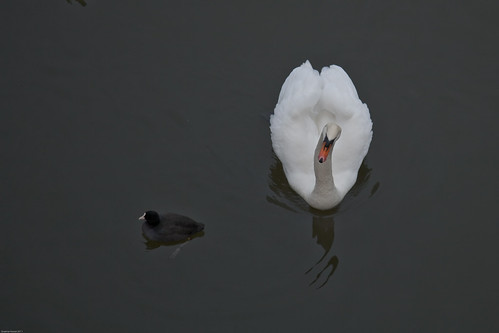
Attenborough Nature Reserve New Year's Day 2011, originally uploaded by Graeme Hoose Photographica.
Two further shots from the day showing the versatility of my new camera and lens.
Monday 3 January 2011
Attenborough Nature Reserve New Year's Day 2011
This blog will be a record of my experimentation in photography and hopefully my record of work for a BA course in photography with the OCA.
I am combining this with my new Flickr account, to also showcase some of my work. In the past the images I have thought to be my best have become lost in the melee of the joint Flickr account which we set up years ago to share our holiday and general pictures with friends and family.
I took advantage of the sales to buy a new tool, a Canon EOS 5D MKII to ensure I have access to a full frame imaging tool again. This means that Jules now has full access to the EOS 400D which was the workhorse D-SLR, and so she has now set up her own Flickr account as well to showcase her talents.
New year , new blog, new start...

